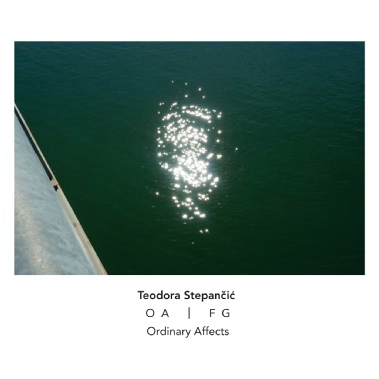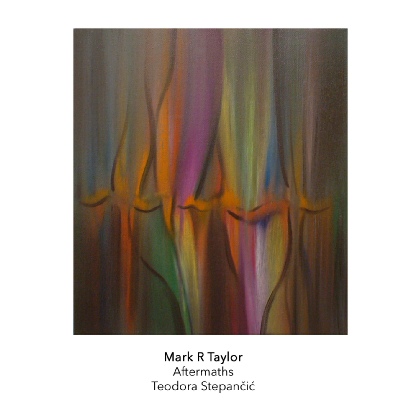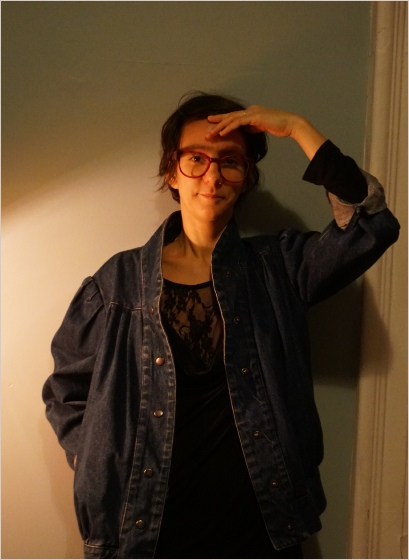Another Timbre TimHarrisonbre

Interview with Teodora Stepančić
You've appeared on Another Timbre before as a pianist (on the excellent CD of Mark R Taylor's piano music), but not previously as a composer. What is the balance between instrumentalist and composer in your activities as a musician? And do they complement each other usefully, or are they just very different practices?
My practices as composer, pianist, and to add also as curator, are intertwined and complement each other. I love performing in my own pieces, working closely with other musicians, and performing and programming pieces by friends and colleagues. I’ve been curating a concert series in Brooklyn for the past few years where I get to present music by people whose work I love. And I also work as a vocal accompanist at a music school - even when I play music that’s very different from what I write and listen to, it is part of the same practice for me. It always includes collaboration. When I play solo, like on Mark R Taylor's CD, I try to collaborate with the composer. The idea for that album came after I programmed and performed Mark’s music at many concerts, because I wanted it to be heard, and I was happy that we could work on those recordings together, sending him material and hearing his feedback.
Great, can we go further back and find out a bit about your life before you went to the States? Am I right that you were born in Serbia? I know nothing about music in Serbia; were you from a musical family, and how much contemporary music is played there?
I was born and raised in Belgrade. There I attended music and ballet schools and later studied piano and composition at the University of Music. My mother is solfege teacher and my uncle was acclaimed Yugoslavian concert and opera tenor, my sister is a violist, so I grew up with mostly classical music.
The contemporary music scene in Serbia is definitely more vibrant now, than when I was living there. When I was a student, with a group of friends, I organized concerts of our music, festivals and collaborations with art students from other universities in the Balkans. Still, in the 90s and early 2000s, it felt like everybody was leaving. Also, there was a war happening. So, I left as well.
In my 20s, I moved to the Netherlands where I continued my composition studies in The Hague. In the 10 years of living there, I was very active as performer of new music, music theater and contemporary opera, as well as composer. I am still one of the pianists of Ensemble Modelo62, based in The Hague, and I created several other experimental music groups there. Then I left again, this time to Brooklyn, almost 10 years ago.
Why did you decide to move to the USA, and New York in particular? And has it been easy to establish yourself in what is already a very busy and active place for contemporary music?
It was time for me to move again, and I felt very brave at the time. Brooklyn really is a great place! It is full of life. It was another challenging immigration story for me, but worth it.
New York is a very active and busy place, but when I moved here, there was not so much happening in the world of music that I am working with. I started organizing concerts myself, and eventually I created the Piano+ concert series in 2017, which I still organize. Our audience slowly became our community and friends, more and more people would perform with us, and then I formed LCollective. I feel that something that is about sharing music without judgement, was much needed in a place where things can get very competitive and stressful. In that sense, I wouldn't talk only about establishing myself, but about adding a space and possibility for music happenings that are open, collaborative and gentle. As a composer, I don't always feel that I fit in established contemporary music scenes, so competing in those spaces does not bother me that much - and I don't want to compete anyway.
The two pieces on the album date from 5 years apart, yet sound like they belong together. How did they each come about, and were they conceived as a pair? And were they both written for Ordinary Affects originally?
Yes, both were written for Ordinary Affects. FG is more open and has another version
for a bigger ensemble while OA has pretty fixed instrumentation. OA are the initials
of the ensemble for which it is written and FG of my child to whom it is dedicated.
OA was commissioned by Ordinary Affects in 2018 and performed in Boston where I worked on it with the ensemble. I wrote FG in 2023, for this album release, which was supported by NYFA Women's Fund for Music. So, I knew they will be together on a CD, but didn't try to make them a pair.
The two pieces were written in very different times and circumstances; one pre-pandemic,
only 3 years after I immigrated to the US; the other in my first year postpartum,
with a one-year-old, after surviving a severe mental illness episode and everything
that happened in between. So, in a way, they feel very distant from each other for
me. My approaches to form and material, as well as the music material itself are
quite different. But I feel too that they fit together and have some things in common.
The performance by the same ensemble helps, they have their unique sound. And, accidentally
(or not), one piece begins with C7 chord, while the other ends with it, and one piece
ends with a major second f-g, and the other is called FG and has a whole section
with only those two notes. They are almost the same length - as most of my pieces.
I think, 25-30 minutes is my length (for now); it allows the music to be slow paced
and still feel like a piece that one can “hold”.
They’re both lovely pieces. Aspects of the music – the (generally) low volume, stretches of silence etc – will be familiar to anyone who has listened to a lot of Wandelweiser music, but there are things in both pieces that were (for me at least) unexpected or surprising. Could you tell us about your relationship to Wandelweiser – both past and present?
My main connection with Wandelweiser music is through performing it. Especially in the past 12 years, I performed many pieces by Wandelweiser composers and participated in Klangraum as composer/performer several times. Recently I recorded a CD with piano pieces by Anastassis Philippakopoulos that was released on EWR, and with my trio with Assaf Gidron and Martin Lorenz we recorded pieces by Michael Pisaro and Jurg Frey. I regularly curate Wandelweiser and music connected to it on my Piano+ concert series.
I was always interested in music that doesn’t try to draw attention to itself, and that is intentional and focused, so when I encountered music from Wandelweiser composers, it made sense. My own aesthetics are also influenced by my experience with Byzantine and Orthodox vocal and choral traditions - I sang in several choirs in Sebia - as well as New York experimental music of the 60s and 70’s, especially Oliveros, Cage and Feldman. I was also influenced by Kagel’s theatrical music, during my school years in The Hague this was a strong interest of mine, and many of my works have theatrical elements in them.
I'm taken with the idea of 'music that doesn't try to draw attention to itself', especially in an age when so much stuff seems to be shouting for our attention, online and elsewhere. Could you say a bit more about how you work - and can survive - in this way in such a strident and commercialised environment?
Currently I work in a music school and am not trying to survive from my music - with the occasional grants or commissions. Exactly because there is so much happening around, I am trying not to compete with it or to replace anything or to get heard over other things. In my compositions I hold space for accidental sounds, and try to blur the distinction between a work and its environment. I want to open windows into overlapping perspectives on experience and distorted sense of place and time, and what I call parallel realities. I ask myself: How much do I need to add to everything that I hear?
at233 Teodora Stepančić ‘O A | F G’’
Two beautiful works for ensemble by the New York-based Serbian composer, both exquisitely performed by Ordinary Affects.
1. O A (2018) 25:28
2. F G (2023) 26:38
Ordinary Affects
Jordan Dykstra, viola Laura Cetilia, cello
Douglas Farrand, trumpet Luke Martin, electric guitar
J.P.A. Falzone, Fender Rhodes & Casiotone MT45
Teodora Stepančić, piano & Casiotone MT68

Teodora Stepančić previously on Another Timbre,
as pianist rather than composer

Teodora Stepančić